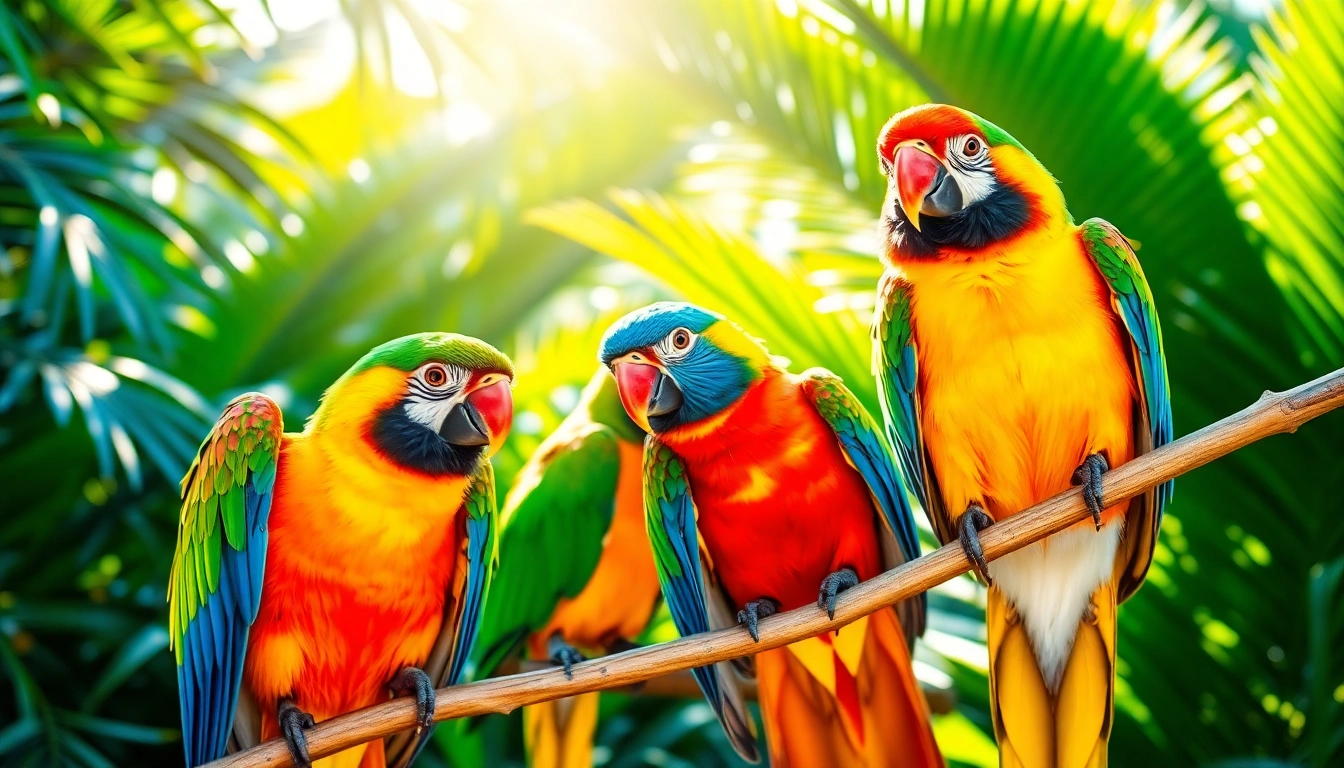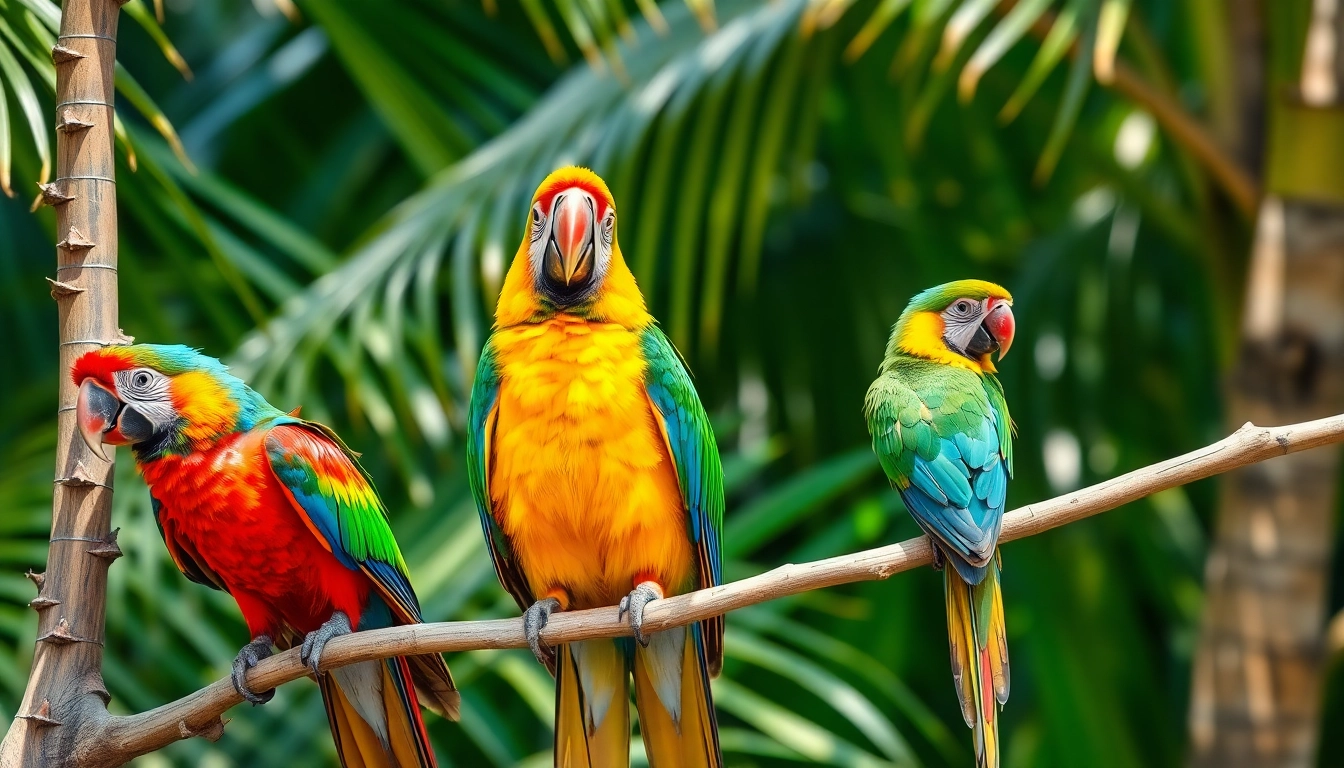
Introduction to Parrots and Their Significance in Bird Watching
Parrots are among the most captivating and vibrant members of the avian world, renowned for their striking colors, intelligent behaviors, and complex social dynamics. Their unique characteristics and charismatic presence make them a favorite among bird enthusiasts and ornithologists alike. Whether observed in their natural habitats or admired through captivity, parrots offer a window into diverse ecosystems and evolutionary adaptations.
For many bird watchers, encountering a parrot in the wild is an exhilarating experience that combines visual splendor with auditory delight. Their vocalizations and social interactions often mimic human sounds, adding an extra layer of fascination. If you’re eager to deepen your understanding and appreciation of these remarkable birds, exploring the various species, their habitats, and conservation challenges is essential. To start your journey, visit parrots and discover a world full of color, intelligence, and ecological importance.
Different Parrots Species and Their Distinct Features
Common Parrot Species and Their Habitats
The diversity among parrots is staggering, with over 390 known species ranging from the small lovebirds to the large macaws. Common species such as the Eclectus, Cockatoos, and African Grey Parrots inhabit a wide range of environments—from dense tropical rainforests to arid woodlands. Understanding their native habitats is crucial for both conservation efforts and practical care in captivity. For example, the vibrant Scarlet Macaw thrives in the humid canopies of Central and South America, while the Cockatoo is frequently found in the forests and open woodlands of Australasia.
Colors, Sizes, and Behavioral Traits
Parrots are renowned for their kaleidoscope of colors, with shades ranging from bright reds and blues to subtle greens and yellows. Size varies significantly—some like the Budgerigar measure just 18 cm, whereas the Hyacinth Macaw can reach nearly 1 meter in wingspan. Behavioral traits also differ: some species are highly social, forming large flocks and engaging in mutual grooming, while others are more solitary or form smaller family groups. These traits influence not only their ecological roles but also their needs in captivity.
How to Identify Parrot Species Accurately
Accurate identification requires attention to key features such as plumage coloration, size, beak shape, and vocalizations. Field guides and birding apps can assist in distinguishing species, especially in regions with high diversity. Observing behavioral patterns, habitat preferences, and geographical location further refines identification. For example, the distinctive crest of the Cockatoo sets it apart from other parrots, while the Grey Parrot’s perceptive eyes and calm demeanor are hallmarks for recognition.
Care and Conservation of Parrots in Captivity and the Wild
Essential Parrot Care Tips for Owners
Proper care is essential to ensure the health and well-being of captive parrots. This includes providing a balanced diet rich in fresh fruits, vegetables, seeds, and specialized pellets. Enrichment through toys, foraging opportunities, and social interaction helps prevent boredom and psychological issues. Regular veterinary checkups, clean cage environments, and appropriate lighting mimic their natural conditions, promoting longevity and vitality.
Challenges Facing Wild Parrot Populations
Wild parrot populations face numerous threats, including habitat destruction due to deforestation, illegal wildlife trade, pollution, and climate change. These challenges lead to declining numbers and can push certain species toward endangerment or extinction. For example, the popularity of parrots in the pet trade often fuels illegal capture, reducing wild populations and disrupting ecological balance.
Conservation Strategies and How to Help
Conservation efforts include habitat preservation, breeding programs, and legislation against illegal trade. Community-led initiatives promote sustainable practices and educate local populations about the importance of parrots. Supporting reputable wildlife sanctuaries and organizations dedicated to sanctuary care or research can also make a meaningful difference. Additionally, responsible pet ownership—such as choosing captive-bred parrots and avoiding wild-caught specimens—helps curb illegal trade and supports sustainable populations.
Parrots’ Communication, Diet, and Training
Understanding Parrot Vocalizations and Body Language
Parrots communicate using a complex array of vocalizations, from whistles and squawks to mimicry of human speech. Their body language, including tail flicks, feather ruffles, and head bobbing, provides insights into their mood and intentions. Recognizing these cues facilitates better interaction and helps prevent behavioral issues. An attentive owner can foster trust and enhance bonding through consistent, positive reinforcement.
Healthy Diet and Feeding Practices
A balanced diet tailored to a parrot’s species and size is essential for maintaining health. Fresh fruits, vegetables, nuts, and high-quality pellets form the foundation, complemented by occasional treats. Avoiding toxic foods such as avocado, chocolate, or caffeine is critical. Proper feeding schedules and portion control prevent obesity, diabetes, and other health complications common among captive parrots.
Training Methods for Parrot Behavior and Enrichment
Training parrots utilizes positive reinforcement techniques that foster trust and teach desirable behaviors. Simple commands like step-up, recall, or target training can improve daily interactions and mental stimulation. In addition, enrichment activities such as foraging toys, puzzle feeders, and social play are vital for preventing boredom and promoting natural instincts like foraging and problem-solving.
Latest Trends and Research in Parrot Studies
Innovations in Parrot Tracking and Monitoring
Advances in tracking technology, including GPS and lightweight radio telemetry, enable researchers to study parrot movements, habitat use, and migration patterns with unprecedented precision. These insights inform conservation strategies, help identify critical habitats, and monitor responses to environmental changes.
Recent Advances in Parrot Behavioral Research
Cutting-edge studies explore parrots’ cognitive abilities, social structures, and vocal learning capabilities. Discoveries about their problem-solving skills and emotional intelligence challenge traditional views of avian cognition and highlight their importance in ecosystems. Such research underpins enrichment methods in captivity and reinforces the necessity of habitat protection.
Future Directions for Parrot Conservation Efforts
The future of parrot conservation relies on expanding community engagement, incorporating cutting-edge technology, and strengthening international legal frameworks. Integrating ecological data with local socio-economic factors can create tailored solutions. Increased public awareness through media and research dissemination is crucial to galvanize support and ensure sustainable coexistence between humans and these extraordinary birds.







